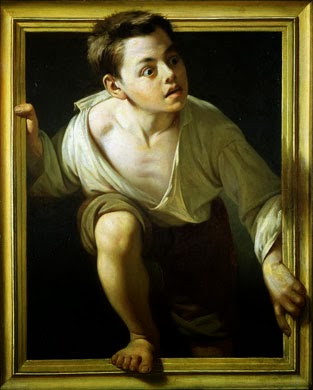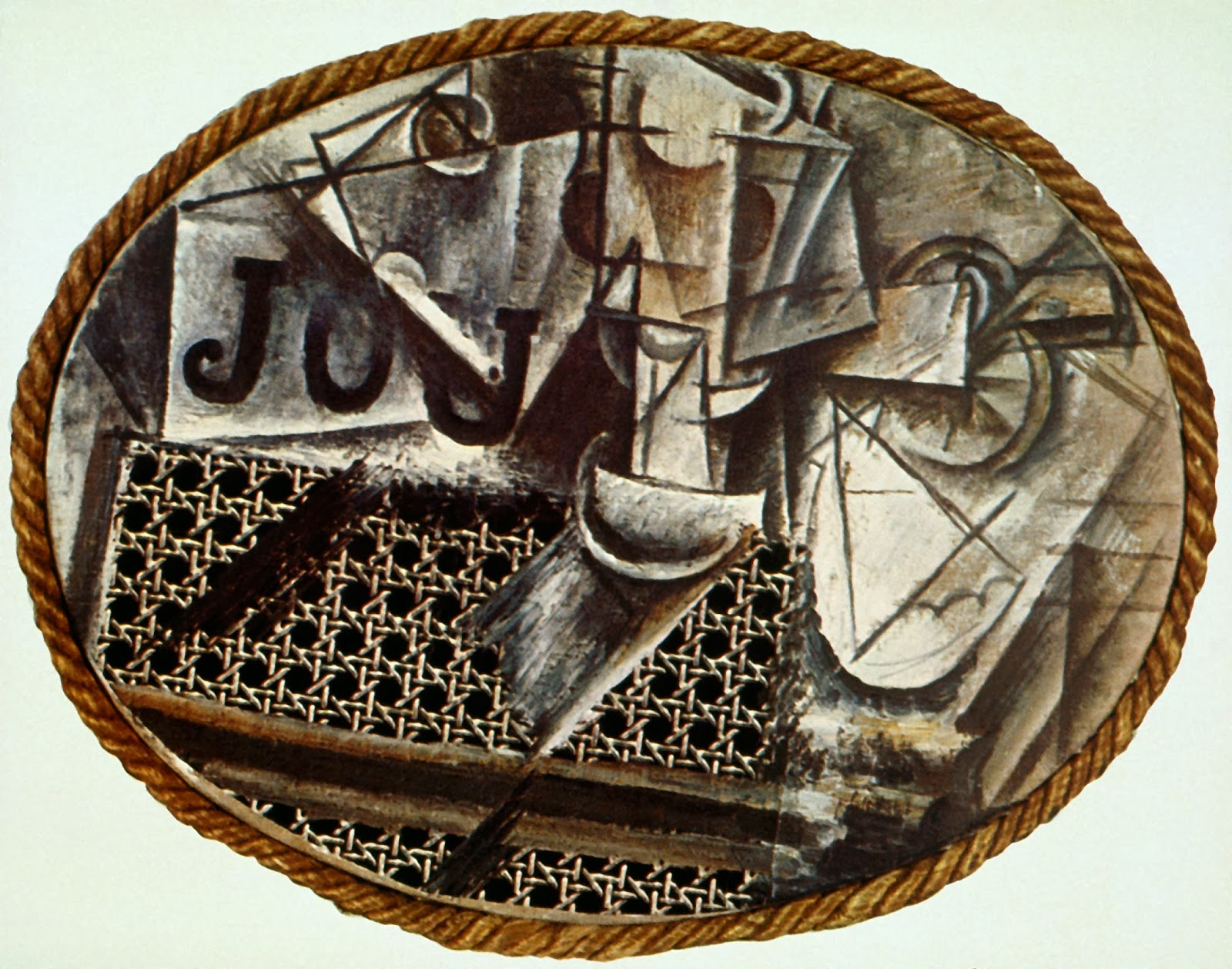Escaping Criticism
Pere Borrell del Caso, 1874
Oil on canvas
76cm x 63cm
The "trick of the eye" in Pere Borrell del Caso’s Escaping Criticism is the frame, which we
believe to be the frame around the painting of the boy. But the frame is part
of the painting itself, and as the boy grabs it and steps onto it, the artist creates the illusion
that he is the climbing out of the painting.
The Crevasse
Edward Müller,
2008
Paint on pavement
250 square metres
The Crevasse by
Edward Müller is an example of a Trompe L’oeil illusion that can only be
observed from a certain perspective. From the position of the photographer, the
image appears three-dimensional, but from the opposite side of the painting, the image would appear flat and the illusion would not be seen.
Still Life with Chair Caning
Pablo Picasso
Oil
on oil-cloth over canvas, edged with rope
29cm x 37cm
Pablo Picasso's Still Life with Chair Caning combines two-dimensional and three-dimensional imagery to create the illusion within the painting. The everyday objects painted inside the rope are depicted in two-dimensional cubism and are layered over the caning, which is realistically painted to create the three-dimensional aspect.



No comments:
Post a Comment